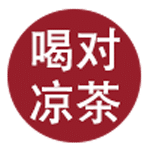Avoid Influenza - TCM Tips for on Lung Care | Post-Influenza Lung Recovery | Nourishing Food
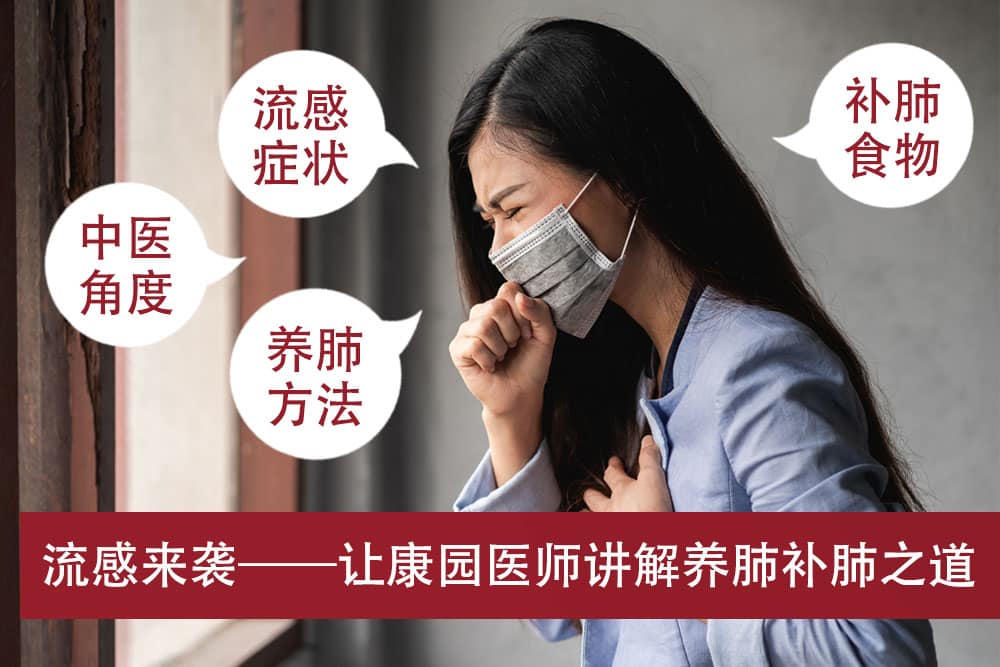
Avoid Influenza - TCM Tips for on Lung Care | Post-Influenza Lung Recovery | Nourishing Food
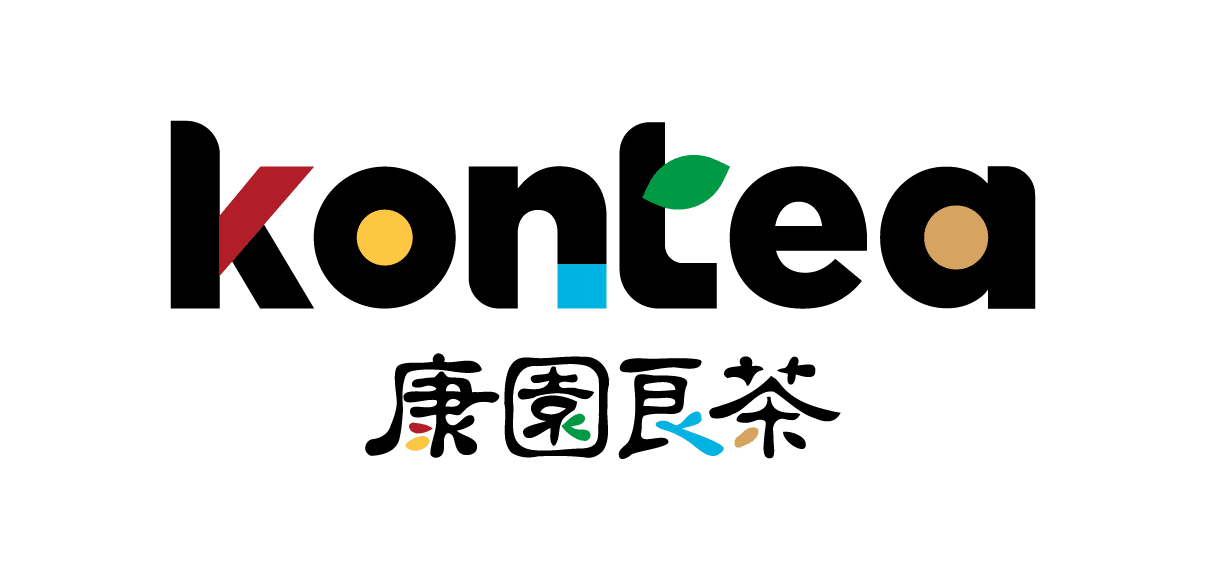
The Relationship Between Influenza and the Lungs - Influenza Symptoms
The "Treatise on Pestilence" states: "When the original Qi is abundant, evil cannot easily enter. When the healthy Qi happens to be deficient, external pathogens take advantage of this and invade through respiration." This means that if the body's vital energy is sufficient and resistance is strong, even if toxic evils invade, they can be cured. On the contrary, if the vital energy is weak, resistance declines, or treatment is delayed, the condition will worsen.
The main symptoms of influenza include: fever, cough, sore throat, dry mouth, runny nose, nasal congestion, headache, body aches, fatigue, and some patients may also experience symptoms such as vomiting or diarrhea.
TCM treatment of influenza emphasizes diagnosis based on pattern differentiation and employs different treatment methods according to the patient's specific situation.
1. Syndrome of Wind-heat Invading Lung
- Principal Symptoms: In the early stage of the illness, there may be fever or no fever, redness and discomfort in the throat, mild cough with little phlegm, and absence of sweat.
- Treatment Method: Disperse wind and clear heat, which is to treat through dispersing wind evil and clearing heat toxins.
- Commonly Used Medications: Yinqiao Powder (modified) or Sangju Drink (modified). The medicines in these formulas, such as honeysuckle, forsythia, chrysanthemum, and mint, have the effects of clearing heat and detoxifying, and dispersing wind and releasing the exterior.
2. Heat Toxin Attacking the Lungs
- Principal Symptoms: High fever, cough, sticky phlegm that is difficult to expectorate, thirst with a desire to drink, sore throat, red eyes, and other symptoms.
Treatment Method: Clear the lungs and resolve toxins, which is to treat through clearing lung heat and detoxifying.
Commonly Used Medications: Ma Xing Gan Shi Tang (modified). The medicines in this formula, such as ephedra, almond, gypsum, and licorice, have the effects of promoting lung function and clearing heat, relieving cough and asthma.
3. Qi and Ying Stages Both Flaring
- Principal Symptoms: High fever, irritability and restlessness, even delirium, cough, chest tightness, or shortness of breath and wheezing.
- Treatment Method: Clear Qi and cool Ying, which is to treat by clearing heat toxins in the Qi stage and cooling blood and nourishing Yin.
- Commonly Used Medications: Xijiao Dihuang Wan (modified). The medicines in this formula, such as rhinoceros horn (or replaced with buffalo horn) and rehmannia, have the effects of clearing heat and detoxifying, cooling blood and nourishing Yin.
- Principal Symptoms: Fever not subsided, dry cough, or a small amount of yellow sticky phlegm, dry mouth and throat, and other symptoms.
- Treatment Method: Clear remaining heat, soothe the lungs and resolve phlegm, which is to treat by clearing residual heat evil, unblocking lung qi, and resolving phlegm.
- Commonly Used Medications: Sha Shen Mai Dong Tang (modified). The medicines in this formula, such as American ginseng and ophiopogon, have the effects of nourishing Yin and moistening the lungs, clearing heat and generating fluids.
- Clearing Heat and Resolving Toxins: This is used in the early stage of influenza when evil heat is predominant. Commonly used medications include honeysuckle, forsythia, and isatis root.
- Dispersing Wind and Releasing the Exterior: This is used when the patient has symptoms such as aversion to cold, fever, and headache. Commonly used medications include schizonepeta, saposhnikovia, and perilla leaf.
- Transforming Dampness and Harmonizing the Middle: If the patient has symptoms such as loss of appetite, abdominal distension, and vomiting, it is necessary to transform dampness and harmonize the middle. Commonly used medications include agastache, eupatorium, and atractylodes.
- Nourishing Yin and Benefiting Qi: In the later stage of influenza, patients may experience symptoms of both Qi and Yin deficiency, such as fatigue, dry mouth, and sore throat. At this time, it is necessary to nourish Yin and benefit Qi. Commonly used medications include American ginseng, ophiopogon, and codonopsis.
There is a saying in TCM: "When righteous Qi exists within, evil cannot invade; where evil gathers, its Qi must be deficient." As long as the body's own righteous Qi is strong, then evil Qi will not easily invade. Therefore, maintaining the body's righteous Qi becomes very important. Let's take a look at how to nourish and supplement the lungs.
How to Nourish the Lungs for Influenza Prevention in TCM
TCM believes that the lungs are a "delicate organ" that governs respiration and Qi, and are in direct contact with the external environment, making them susceptible to external pathogens. Therefore, nourishing the lungs is crucial for preventing influenza and maintaining good health. Especially during periods when influenza is prevalent, it's even more important to pay attention to lung nourishment. If you have travel plans abroad, you should be especially mindful and prepare for lung nourishment in advance. The following are key points for nourishing the lungs compiled by Kang Won TCM Practitioner:
1. Don't Underestimate a Cold - The Lungs are the First Line of Defense
- A cold is a signal that the body needs rest and adjustment. When you have a cold, you should rest and avoid overexertion or alcohol consumption.
- It is recommended to seek a face-to-face consultation with a doctor for treatment based on the cause of the cold. Do not blindly take anti-inflammatory drugs or antibiotics to avoid suppressing the immune system.
- Fever is a manifestation of the body's resistance against external pathogens. Do not rush to reduce the fever, but seek medical attention promptly if the high fever persists.
- TCM treatment of colds has different types such as wind-cold and wind-heat, which are more targeted than Western medicine's simple fever reduction and have fewer side effects. Therefore, you can judge according to your own symptoms and choose the treatment plan that suits you.
2. Respiratory Nourishment for the Lungs
- Respiratory health preservation, that is, through slow, even, and long breathing, inhale the clear Qi into the Dantian (an energy center in the lower abdomen) and exhale the turbid Qi.
- This breathing method helps regulate the body's Qi mechanism, promote blood circulation, and enhance lung function.
- When practicing breathing, relax your body and mind, place your thoughts in the universe, and experience the insignificance of the human body, so as to achieve a state of "holding the center."
- Keep the room well ventilated and avoid staying in a polluted environment for a long time.
3. Nourishing the Skin Can Also Nourish the Lungs
- The skin is the external manifestation of the lungs, and skin problems may reflect lung problems. Proper skin massage can promote lung health.
- Engage in appropriate outdoor exercise and feel the spring air, which helps to strengthen the physique and improve immunity.
- After exercise, use a dry towel to wipe the body to help the skin detoxify and avoid moisture entering the pores.
- Do not wrap your body in plastic for exercise and weight loss, so as not to affect skin breathing and lead to poor circulation of Qi and blood.
4. People with Long-Term Constipation May Need to Take Care of the Lungs
- The lungs and large intestine complement each other, and smooth lung Qi helps with large intestine excretion. Long-term constipation may be related to poor lung Qi, so treatment may consider lung Qi factors.
- For constipation in the elderly, attention should be paid to replenishing Qi and promoting Qi circulation, rather than simply using laxatives.
- You should eat more fresh fruits and vegetables and eat less spicy and irritating food.
- Kongzui Point (孔最穴):
-
-
- Location: On the flexor side of the forearm, 7 inches above the wrist crease.
- Efficacy: As a lung meridian acupoint, it has the effects of clearing heat, releasing the exterior, benefiting the throat, and stopping bleeding. It can be used to treat asthma, cough, sore throat, bronchitis, etc.
-
- Taiyuan Point (太渊穴):
-
-
- Location: Located at the radial end of the wrist crease after the palm, in the depression on the radial side of the radial artery.
- Efficacy: As a lung meridian acupoint, it has the effects of promoting lung function and relieving asthma, relieving cough and phlegm, and clearing the throat and reducing swelling. It can be used to treat cough, asthma, swollen and sore throat and other symptoms.
-
- Fengchi Point (风池穴):
-
-
- Location: In the depression on the outer edge of the two large tendons in the neck.
- Efficacy: As a gallbladder meridian acupoint, it has the effects of dispelling wind and releasing the exterior, relieving headaches and dizziness, and treating stiff neck and pain. It can be used for headaches, shoulder and neck pain, dizziness and other symptoms in the early stage of a cold.
-
- Lung Meridian Tapping Method for Lung Nourishment:
-
- Posture: Take a sitting or standing position with your arms slightly bent.
- Method: Use one hand to hold a virtual palm or close your five fingers together, and use your fingertips to tap the lung meridian starting from the Zhongfu acupoint on the opposite shoulder, passing through Chize, Lieque, Taiyuan to Shaoshang.
- Time: Alternate between the two sides, and each tapping time is about three minutes.
- Efficacy: It can promote the circulation of Qi and blood and play a role in nourishing Qi and lungs.
Foods to Nourish the Lungs - What to Eat? Lung Nourishing Soups
Nourishing the lungs is crucial for preventing influenza and maintaining good health. Dietary nourishment is better than medicinal nourishment. Having a healthy body before influenza strikes can better ensure your own health. The following are a series of foods suitable for nourishing the lungs, helping you to moisten the lungs and clear the heart in your daily diet, building a healthy defence line.
Fruits
- Pear: Cool in nature and sweet in taste, it has the effects of moistening the lungs and clearing heat, generating fluids and quenching thirst. It can be used to relieve dry cough due to lung dryness.
- Apple: Neutral in nature and sweet in taste, it can moisten the lungs and relieve cough, generate fluids and quench thirst, and is suitable for those with lung Yin deficiency.
- Grape: Neutral in nature and sweet in taste, it has the effects of replenishing Qi and nourishing blood, nourishing Yin and moistening the lungs, and helping to improve shortness of breath and fatigue.
Vegetables
- Lily Bulb (百合): Neutral in nature and sweet in taste, it has the effects of moistening the lungs and relieving cough, clearing the heart and calming the nerves. It can be used to relieve dry cough, insomnia and other symptoms.
- White Fungus (银耳): Neutral in nature and sweet in taste, it has the effects of nourishing Yin and moistening the lungs, replenishing Qi and nourishing blood, and is suitable for those with weak lung Yin.
- Radish: Cool in nature and pungent in taste, it has the effects of clearing heat and generating fluids, resolving phlegm and relieving cough. It can be used to relieve cough due to lung heat, excessive phlegm and other symptoms.
Others
- Monk Fruit (罗汉果): Cool in nature and sweet in taste, it has the effects of clearing heat and moistening the lungs, generating fluids and quenching thirst. It can be used to relieve sore throat, cough and other symptoms.
- Honey: Neutral in nature and sweet in taste, it has the effects of moistening the lungs and relieving cough, moistening the intestines and relieving constipation. It is suitable for those with dry cough due to lung dryness and constipation.
- Nuts: Such as almonds and walnuts, have the effects of moistening the lungs and relieving cough, resolving phlegm and relieving asthma, and can be consumed in moderation.
Recommended Lung Nourishing Soups
- Rock Sugar Pear Soup (冰糖雪梨汤): Stew peeled and diced pears with rock sugar. It has the effects of moistening the lungs and relieving cough, clearing heat and resolving phlegm.
- Lily and Lotus Seed Soup (百合莲子汤): Wash lily bulbs and lotus seeds, and stew them with rock sugar. It has the effects of nourishing Yin and moistening the lungs, clearing the heart and calming the nerves.
- White Fungus Soup (银耳羹): Soak and wash the white fungus, and stew it with rock sugar. It has the effects of nourishing Yin and moistening the lungs, replenishing Qi and nourishing blood.
Kang Won TCM Practitioner also recommends choosing the right lung-nourishing foods according to your own constitution and symptoms:
- Lung Cold (肺寒):Eat more pungent and warm foods, such as ginger, perilla leaves, green onions, and garlic.
- Lung Heat (肺热):Eat some pungent and cool foods, such as mint, mulberry leaves, chrysanthemum, houttuynia, loquat, reed root, loofah, and wax gourd.
- Lung Qi Deficiency (肺气虚):Eat some jujubes, poria, and coix seed to strengthen the spleen and benefit the lungs by nourishing the earth to generate metal (a TCM concept).
Kontea Recommendation Products
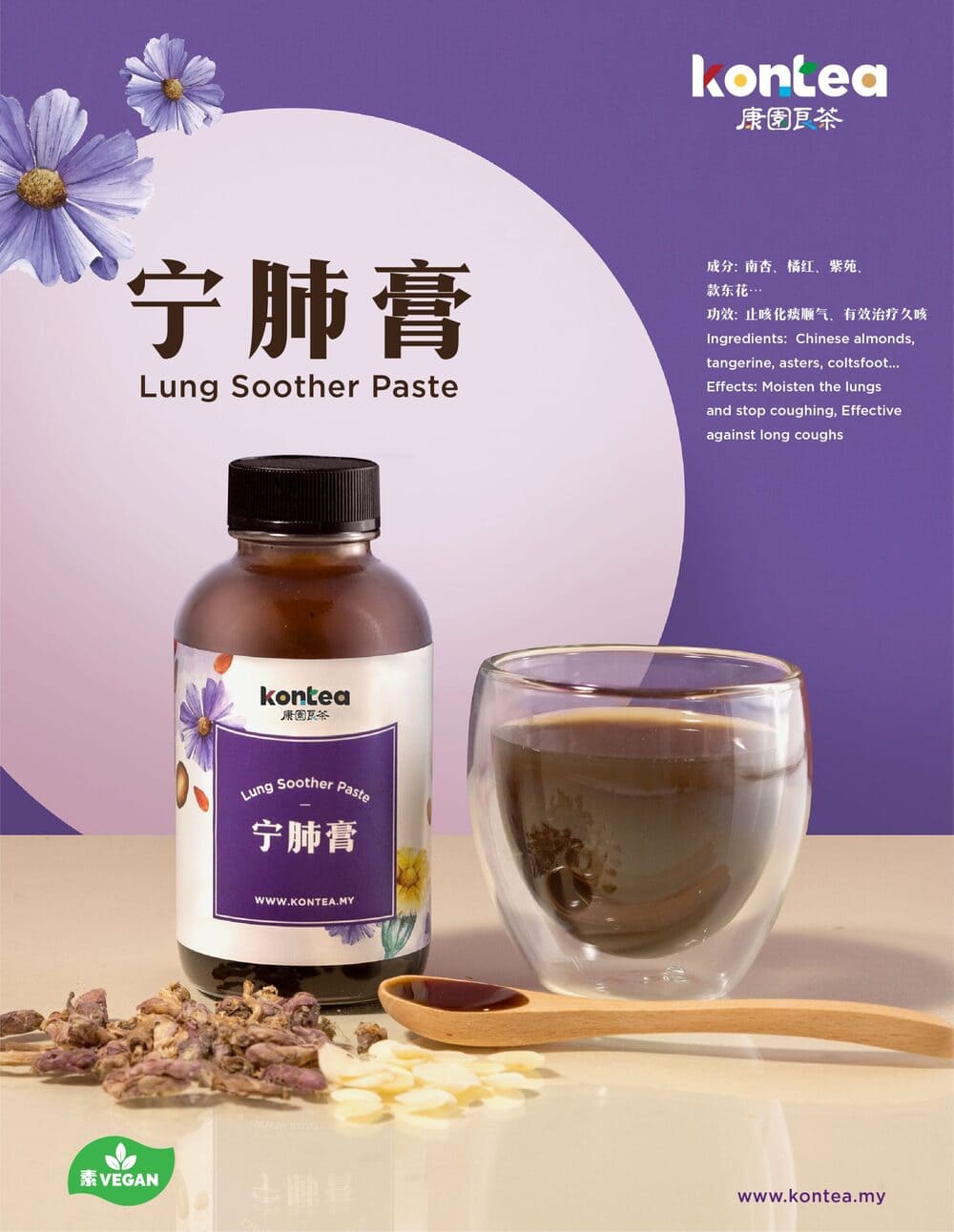
Lung Soother Paste
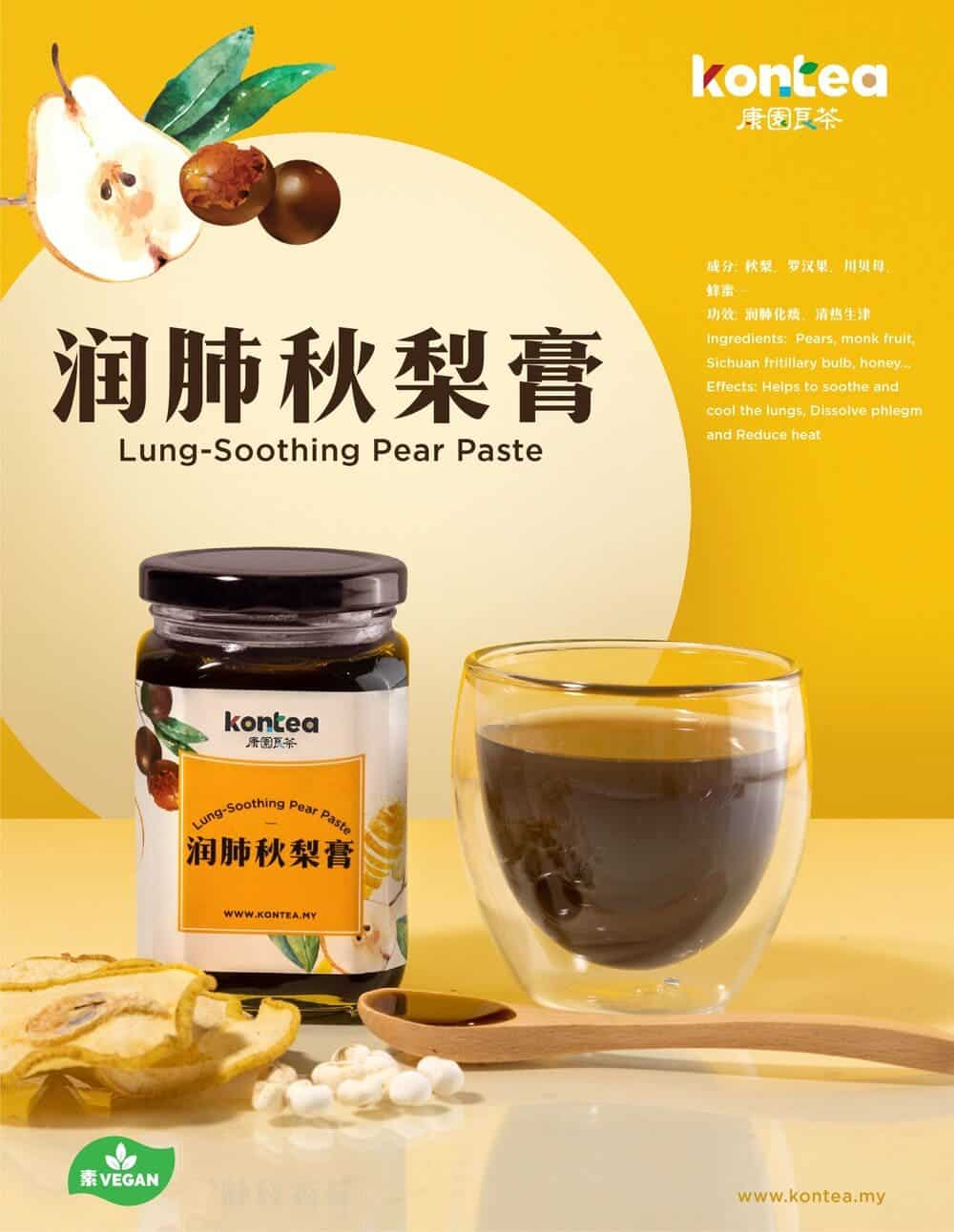
Lung-Soothing Pear Paste
Effects:A traditional medicinal diet since the Tang Dynasty. The main ingredient is pear; when stewed with monk fruit, Sichuan fritillary bulb, and honey, the paste helps to soothe and cool the lungs, as well as dissolve phlegm.
Suitable for:Dry throat and mouth; dry cough without phlegm; excessive body heat. Highly recommended for frequent drinkers and smokers.
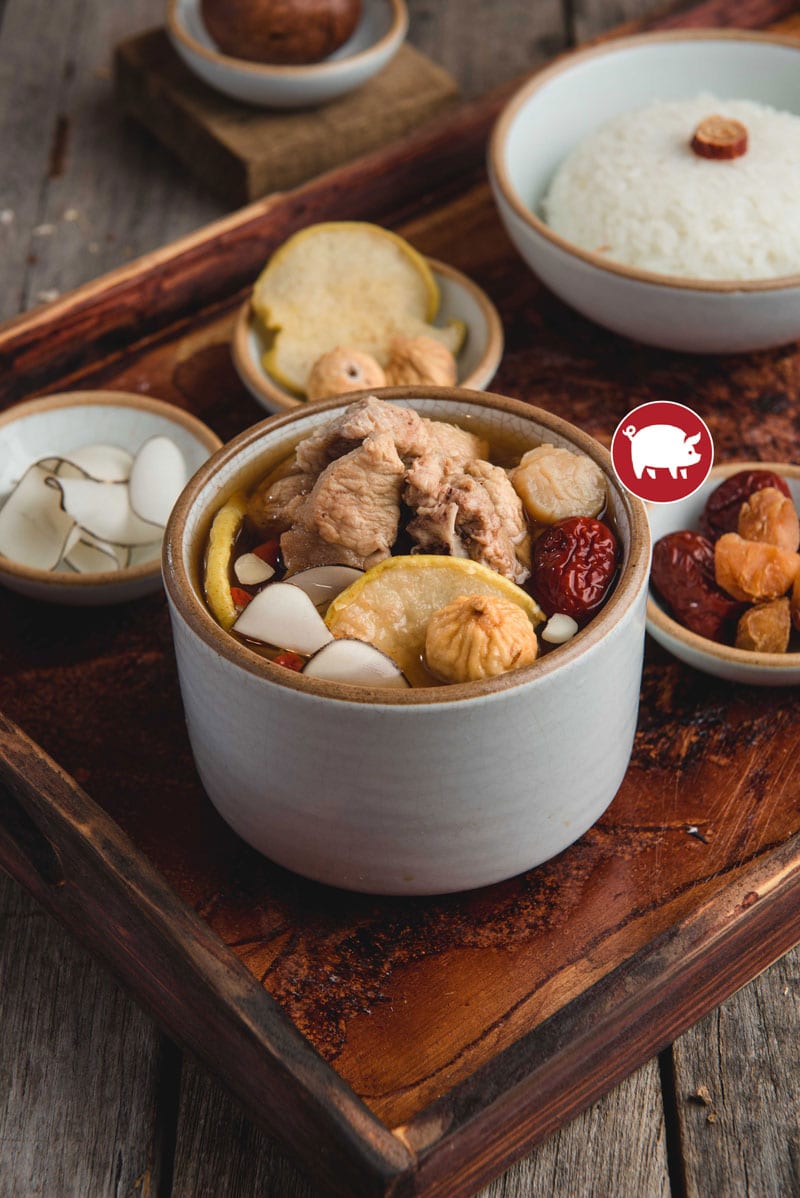
Sea Coconut Soup
Effects:Sea coconut highly benefits the lungs and throat. It strengthens the lungs to treat dryness which results in chronic cough. Through strengthening the lungs, it can also reduce phlegm. Paired with a fig, the soup also benefits the spleen, digestive system and relaxes the bowel
Suitable for: Cough, sore throat, phlegm, dry throat.
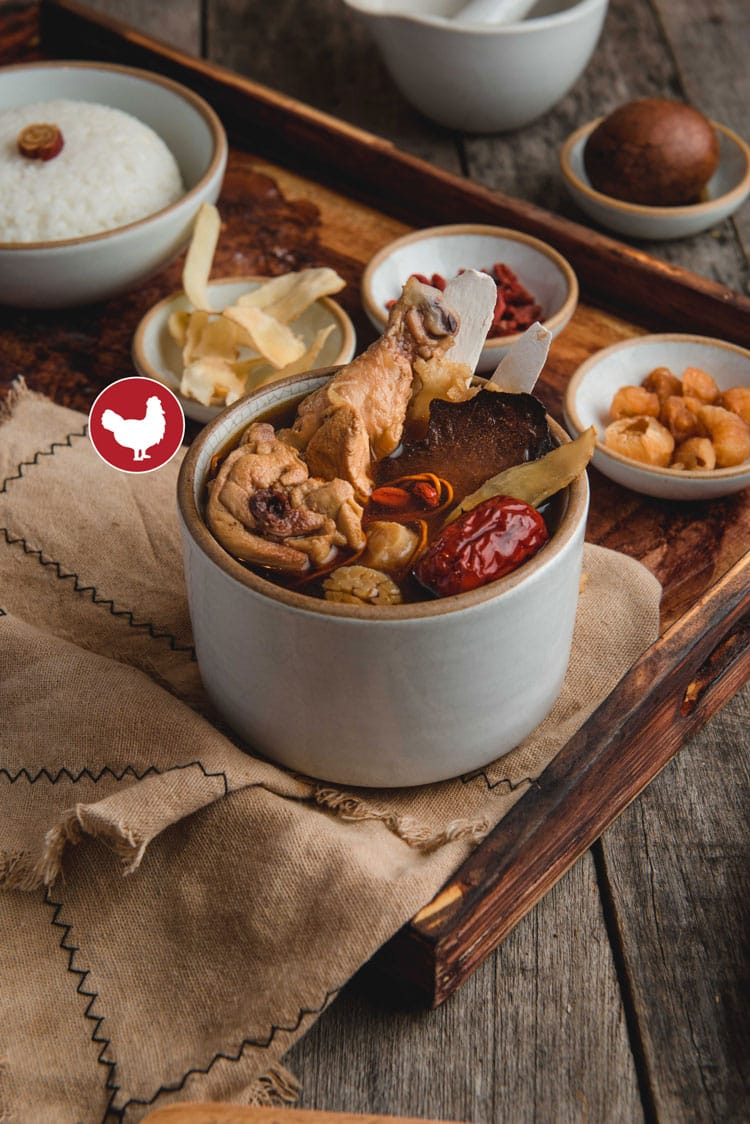
Cordyceps Flower Soup
Effects:Cordyceps flower can calm the lungs and heavy breathing, improves the yang energy, and is incredibly beneficial for people with a sensitive oesophagus. It is rich in nutrients, including 18 types of amino acids, 12 types of vitamins, and 17 different minerals, can prevent lack of oxygen and fatigue, lowers blood sugar levels, and protects the liver. Combining cordyceps with wolfberries and Chinese yam results in better focus and extends life expectancy.
Suitable for: People who has dry coughs and asthma caused by kidney deficiency.
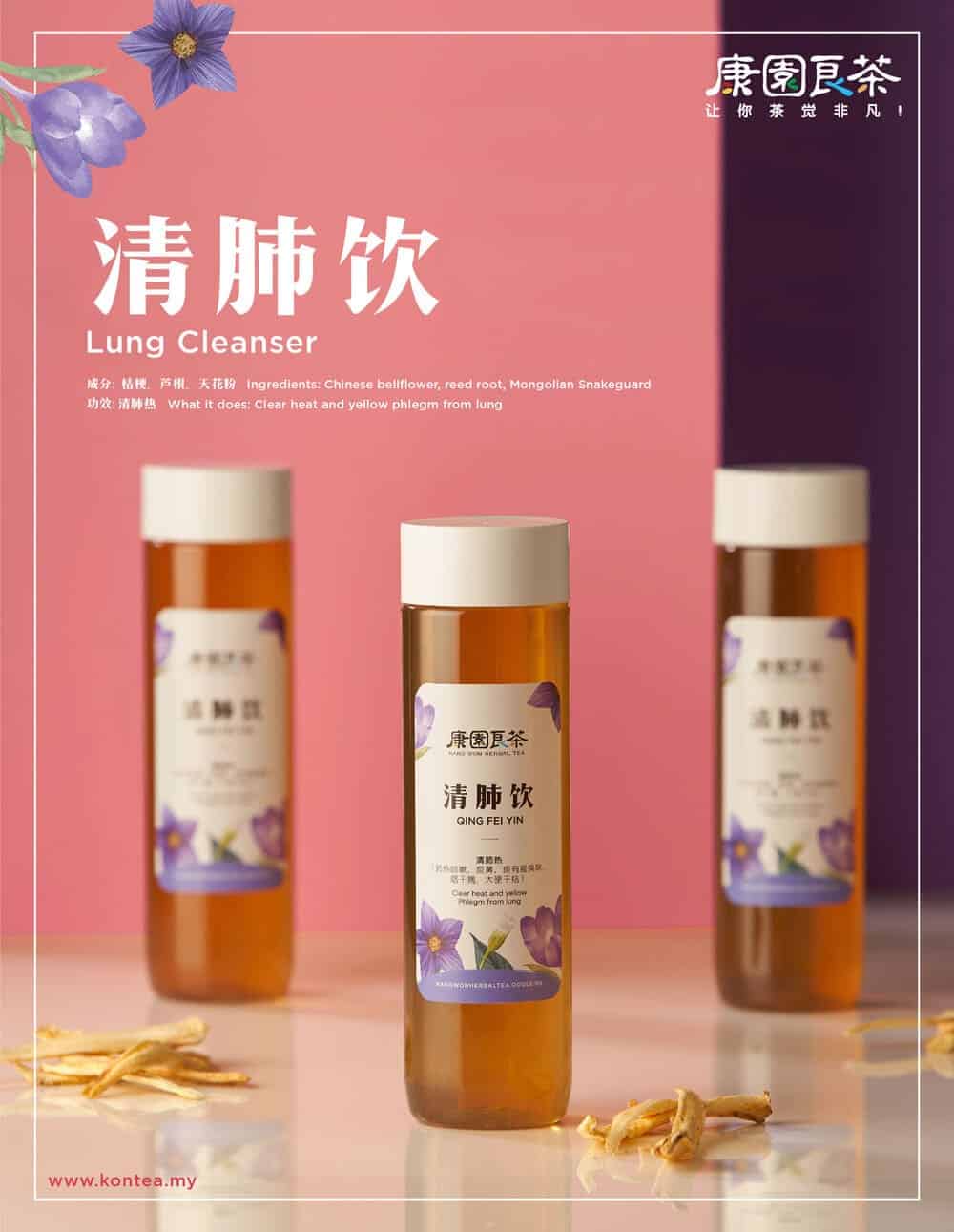
Lung Cleanser Tea
Effects:Chinese bellflower is capable of eliminating cough, expectorant and pus; Reed root reduces excessive heat and thirst; and Mongolian Snakeguard purges pathogenic fire. The Lung Cleanser combines the effect of the three ingredients, hence making it beneficial to the rejuvenation and preservation of lung functionality.
Suitable for:Yellowish pus, dry and sore throat, smokers, and dry stool.
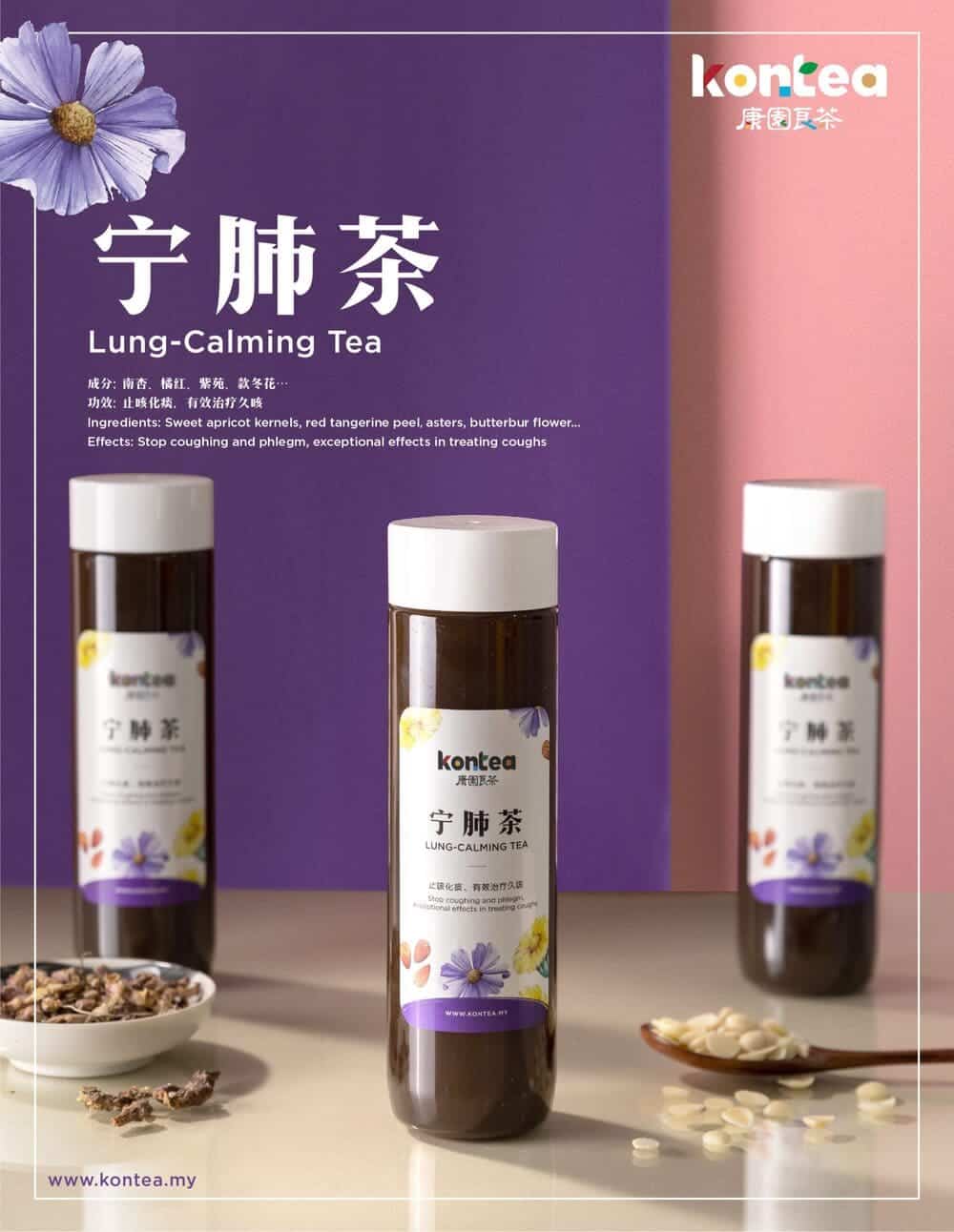
Lung-Calming Tea
Effects:Specially made by KangWon, the Lung-Calming Tea consists of sweet apricot kernels for its sweetness; red tangerine peel and asters for their effects of clearing the throat; and butterbur flower for its exceptional effects in treating coughs.
Suitable for:When coughing with a lot of phlegm.
Kang Won TCM Practitioner would also like to remind you that lung nourishment should start with the little things in daily life. In terms of diet, eat more foods that moisten the lungs; in terms of daily life, keep the room ventilated and avoid catching cold; in terms of exercise, you can practice deep breathing, tapping the lung meridian, and promote the circulation of Qi and blood; in terms of spirit, keep a happy mood and avoid emotional fluctuations. If you feel unwell, please seek medical attention promptly.
Kang Won Herbalist
Kang Won TCM Practitioner also recommends seeking medical attention as soon as rheumatic symptoms begin to appear. Early consultation allows us to provide you with suitable treatment and prevention plans based on your symptoms and underlying causes.
Our TCM Practitioner specializes in diagnosing and treating various internal health issues in the internal medicine field. We are dedicated to balancing the body's energy flow to alleviate internal problems and improve overall health. Therefore, if you have any concerns about rheumatic diseases, we welcome you to consult with us in person to learn more.
Feel The Teaference
Kontea Products
Professional Service
TCM Services
Graduated from Nanjing University of Chinese Medicine in China, we are licensed Chinese medicine practitioners who provides professional Chinese medicine services. We approach each patient's case from their perspective, attentively listening and analyzing their physical condition.
